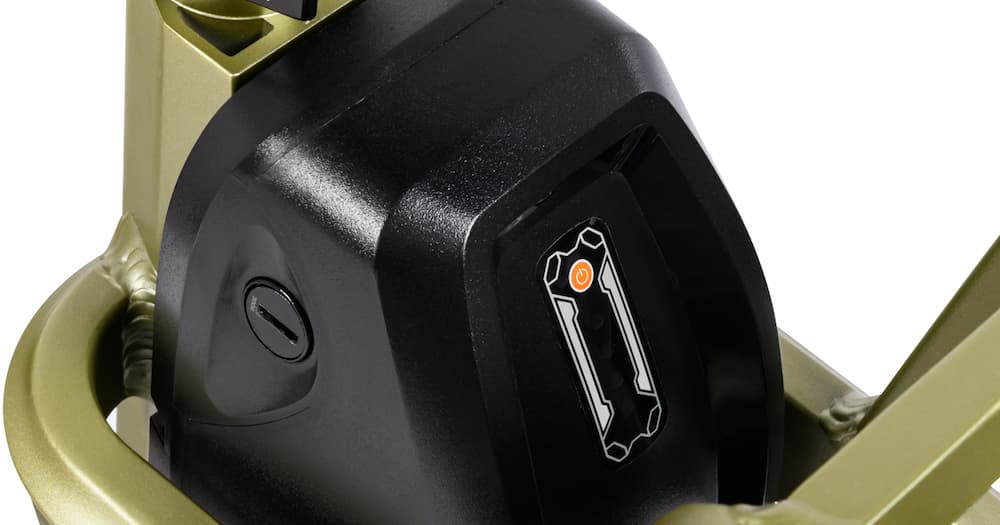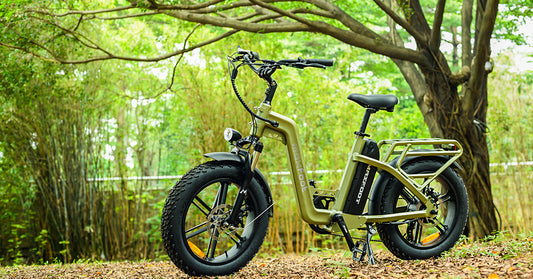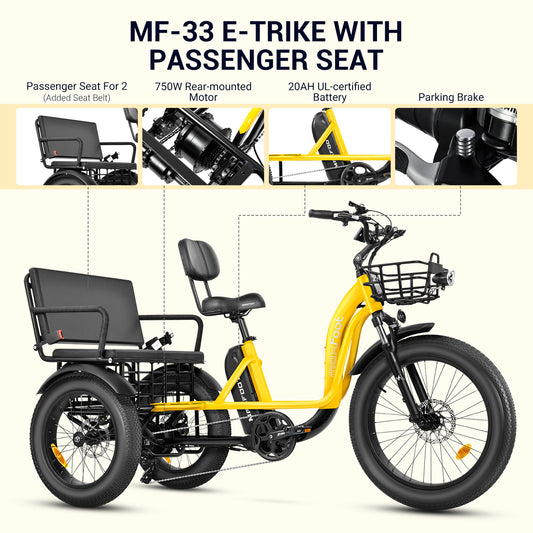When you first hop on an electric bike, the last thing on your mind is probably the care and maintenance of its battery. But as any seasoned rider will tell you, your battery’s health is the key to long-lasting and enjoyable rides.
Unfortunately, it’s easy to fall into habits that can harm the battery without even realizing it. From neglecting safety precautions and regular inspections to using incompatible chargers, there are plenty of ways to unintentionally shorten your battery’s lifespan.
Let’s dive into 12 common mistakes to avoid when using electric bike batteries so you can extend your battery life and enjoy every ride to the fullest.
1. Using Incompatible Chargers
Borrowing a friend’s charger that doesn’t match your battery’s specifications might not seem like a big deal, but it can lead to inefficient charging, safety risks, or permanent damage to the battery. That’s because not all chargers are created equal.
Incompatible chargers may provide incorrect voltage or current, which can damage the battery cells and reduce its lifespan over time.
How to Avoid It:
- Avoid Universal Chargers:While it might be tempting to use a universal charger that’s cheaper and easier to find, these often don’t match the specific requirements of your battery.
- Stick to Manufacturer-Approved Chargers:Always use the charger that comes with your e-bike or purchase one specifically recommended by the manufacturer.

2. Choosing the Wrong Charging Environment
E-bike batteries are sensitive to temperature, and charging them in extremely hot, humid, or cold temperatures can affect their performance and longevity.
How to Avoid It:
- Charge Indoors:Always charge your battery indoors where the temperature is stable. Ideally, it should be a dry, cool, and well-ventilated area.
- Avoid Charging in Direct Sunlight:Direct sunlight can cause the battery to overheat, so find a cool, shaded area for charging if you must do it outdoors.
- Keep It Warm in Winter:In colder months, consider charging the battery in a warm room to avoid the effects of low temperatures.
- Avoid Hazardous Locations:Never charge near a heat source (like a radiator) to prevent battery overheating or in spaces prone to moisture (like a damp garage) to prevent moisture from getting into the battery.
3. Not Fully Charging Before First Use
When you first get your e-bike, it’s recommended to fully charge the battery before taking it for a spin. Failing to do so can result in the battery not reaching its full capacity later.
How to Avoid It:
- Be Patient:While it might be exciting to try out your new e-bike immediately, take the time to fully charge the battery first.
- Follow the Initial Charging Instructions:The manufacturer usually provides specific guidelines for the first charge. Follow these to ensure optimal battery performance.
4. Deep Discharges
Letting your e-bike battery run completely out of charge before recharging is another common mistake. Many users do this because they think it’s the best way to maximize the battery’s usage, but it’s far from the truth.
Lithium-ion batteries perform best when kept at a charge between 20% and 80%. Deep discharge can cause irreversible damage to the battery cells and reduce the overall battery life.
How to Avoid It:
- Monitor Charge Levels:Keep an eye on your battery’s charge level during rides to avoid deep discharge.
- Charge Regularly:Try to recharge your battery when it reaches around 20-30% of its capacity.
5. Battery Overcharging

Source: Lithium ion battery monitoring electronics (overcharge and over-discharge protection)
Many people think it’s convenient (and harmless) to let the battery charge overnight. However, this can stress the battery cells, causing them to degrade faster and deteriorate battery performance.
Battery overcharging can also lead to overheating, which may cause significant damage to the battery cells.
How to Avoid It:
- Use a Timer:Set a timer to remind yourself to unplug the battery once it’s fully charged.
- Check the Manufacturer Guidelines:Follow the charging instructions provided by the manufacturer, which often include an optimal charging time.
- Invest in a Smart Charger:Some chargers automatically stop charging once the battery is full to prevent overcharging. Get one if it’s manufacturer-approved.
6. Ignoring Battery Overheating
Battery overheating is a serious issue that can lead to performance drops or even dangerous situations like battery fires. Overheating often results from prolonged charging, heavy usage, or exposure to high temperatures.
If you notice your battery getting excessively hot during or after a ride, it’s a clear sign of overheating that should not be ignored.
How to Avoid It:
- Make Room for Cool Down Periods:Allow the battery to cool down after a long ride before charging it.
- Avoid Direct Sunlight:Never leave your e-bike in direct sunlight for extended periods.
7. Improper Storage
How and where you store your e-bike battery significantly impacts its lifespan, especially if you’re not using the bike for an extended period.
Storing it in extreme temperatures can lead to battery overheating, capacity loss, underperformance, or even complete failure. Hence, you should never leave your e-bike in a garage during a hot summer day or in a freezing shed during winter.
How to Avoid It:
- Store at Room Temperature:Keep the battery in a cool, dry place, ideally at room temperature.
- Partial Charge for Prolonged Storage:If you’re storing the battery for more than a few weeks, charge it to about 50-60% before storing it to prevent deep discharge and maintain the battery’s health.
- Avoid Long-Term Storage in the Bike:If you’re not using the bike for a long time, it’s better to remove the battery and store it separately.
8. Poor Riding Habits
Riding in heavy rain, snow, or extreme heat without precautions exposes the battery to harmful conditions. Water can seep into the battery casing, leading to short circuits or corrosion over time, which can permanently damage the internal components. Snow and ice, on the other hand, can cause the battery to freeze or become sluggish, reducing its efficiency and overall lifespan. With extreme heat arises the issue of battery overheating, which may result in swelling, leakage, or even fires in severe cases.
Additionally, riding habits like constantly cruising at top speed, making frequent hard stops, and engaging in rapid acceleration for the thrill can drain the battery faster and contribute to its wear and tear. Over time, you’ll notice a decrease in battery performance.
How to Avoid It:
- Use a Battery Cover:In wet or cold weather, consider using a protective cover to shield the battery from environmental elements.
- Avoid Puddles:Try to avoid riding through deep puddles, which can cause water to seep into the battery compartment.
- Ensure Careful Handling:After riding in extreme conditions, wipe down the battery and e-bike components to remove any moisture, snow, or dirt that could contribute to damage.
- Ride at Moderate Speeds and Accelerate Gradually:Riding at a steady, controlled speed conserves battery power, reduces the strain on the battery, and helps it last longer. The same goes for acceleration.
- Optimize Your Route:Plan your routes to minimize stop-and-go traffic or steep inclines that require frequent acceleration. Choosing smoother, flatter routes can help you maintain a consistent speed and reduce battery drain.
9. Skipping Regular Battery Inspection and Maintenance
Like any other part of your e-bike, the battery requires regular maintenance to function optimally. Additionally, regular battery inspections are essential for spotting issues early. Many e-bike owners neglect this and end up facing undetected problems that worsen over time.
Issues like small cracks or swelling in the battery casing might seem minor but can be signs of significant internal damage.
How to Avoid It:
- Clean the Battery Contacts:Dust and debris can accumulate on the battery contacts, leading to poor performance. Use a soft cloth to clean the contacts regularly.
- Routine Checks:Regularly inspect the battery for any signs of physical damage or wear.
- Professional Help:If you notice anything unusual, consult a professional to avoid further damage.
10. Ignoring Safety Precautions
Ignoring basic safety precautions when handling e-bike batteries can lead to serious accidents. Safety should always be a top priority when charging, storing, or using your e-bike battery.
Many users don’t realize how unsafe it is to use a damaged battery or choose the wrong charging environment. These actions increase the risk of fire or electric shock, compromising their own and others’ safety.
How to Avoid It:
- Inspect Before Use:Always check your battery and charger for damage before use.
- Adopt Safe Charging Practices:Follow all safety guidelines, such as using a surge protector and avoiding overloading electrical circuits.
11. Ignoring the Battery’s Lifespan
All batteries have a limited lifespan, and ignoring this fact can lead to unexpected failures. Over time, the battery’s capacity will decrease, and it won’t hold a charge as well as it used to.
How to Avoid It:
- Monitor Battery Health:Regularly check the battery’s performance. If you notice a significant drop in range, it might be time to replace the battery.
- Plan for Replacement:Be prepared to replace the battery after a few years, depending on your usage. It’s better to replace it before it fails completely.
12. Not Following the Manufacturer Guidelines
Every e-bike and its battery are unique, with specific instructions from the manufacturer. Ignoring these guidelines can lead to a range of problems.
For one, not following the recommended charging practices or using the wrong accessories can result in poor battery health and void your warranty.
How to Avoid It:
- Read the Manual:It might not be the most exciting read, but it contains crucial information about how to care for your e-bike battery.
- Follow the Recommendations:Whether it’s charging times, storage tips, or maintenance advice, following the manufacturer’s recommendations will help extend the battery’s life.
Summing It Up
The longevity and performance of your e-bike battery largely depend on how well you take care of it.
By avoiding common mistakes like overcharging, using incompatible chargers, improper storage, and ignoring regular inspections, safety precautions, and manufacturer guidelines, you can extend the life of your battery and ensure your e-bike performs at its best.
Treat your e-bike battery with care, and it will reward you with consistent performance year after year.




